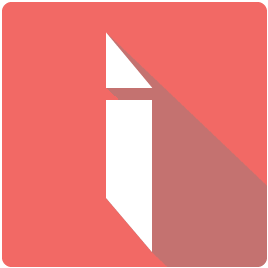Passenger Service System (PSS)
As an expat based at Emirates HQ in Dubai, I led the digital transformation of one of the biggest projects in aviation: the development of a new Passenger Service System (PSS). I managed a team of 2 UX and 2 UI designers, overseeing the entire user experience from concept to launch. I shaped the design strategy with a user-centered, outcome-driven approach to deliver seamless, world-class multi-touchpoint products.
My role
I led the end-to-end design process including discovery phase, interaction, and visual design, as well as user research and stakeholder management. My deliverables included competitor analysis, user journeys, information architecture, story boards, experience maps, UI designs, interactive prototypes, measuring outcomes, and final deliverables to the development team.
Project:
A Passenger Service System (PSS) is a software system used by airlines to manage various passenger-related activities such as reservations, ticketing, check-in, and boarding.
The project involved designing the airline reservations and the Departure Control Systems (DCS)
1. The airline reservations system - that allows an airline to sell their inventory (seats)
2. Departure Control System (DCS) designed to automate processing Emirates airline’s airport management operations including check-in, printing boarding cards, business lounge checkin, baggage acceptance, boarding, load control and aircraft checks.
Problem statement
Emirates Airline is growing rapidly, with more planes, destinations, and flights. This growth has made our systems and processes more complex and harder to manage. To tackle this issue, we need to implement a better Passenger Service System (PSS) that can standardise our processes and help us grow smoothly. Our current systems communicate slowly and inefficiently.
The key KPIs are: Reducing costs for the airline, reducing employee training time (6 weeks), updating outdated technology, future-proofing for scalability, Fixing security issues making our operations more efficient and enhancing the customer experience.
BEFORE: Old command based passenger check-in screen
AFTER: New passenger check-in screens designs
Competitor Analysis
Conducted competitor research with some of the following systems:
Amadeus: Amadeus offers a suite of PSS solutions that cover reservations, inventory management, departure control, and more. It's widely used by airlines around the world. (Used by Lufthansa, Air France-KLM, British Airways, Qatar Airways)
Sabre: Sabre's PSS provides solutions for reservations, inventory, and departure control. It's known for its technology that optimises revenue and enhances operational efficiency. (American Airlines, Delta Air Lines, Southwest Airlines, United Airlines)
SITA: SITA provides various solutions for airlines, including PSS components for reservations, departure control, and baggage management.
Story boards & Experience Maps
Designing story boards and experience maps - capturing and communicating complex customer interactions. Building knowledge and consensus across Emirates airlines and helping building a seamless customer experience.
Examining the holistic journey a user undertakes to achieve a specific goal involved a comprehensive analysis encompassing various products and channels, spanning both digital and physical touch points. This entailed evaluating experiences across multiple platforms, both online and offline. For instance, the journey associated with a goal like "Booking my airport transfer to the hotel or searching for destination excursions" extended beyond the mere purchase of airline tickets. It involved a continuum of interactions and activities that contribute to the overall user experience.


User research / usability testing
Conducting a contextual inquiry at Dubai Airport to uncover intricate details, parameters, criteria, and process flows relevant to the design, particularly focusing on the Emirates passenger check-in, business lounge checkin flow.
Facilitating user research and regular usability sessions to validate hypothesis and meet user goals.
Ideation - Information architecture, solutions, and ideas

New system in use with Emirates airlines staff.
Outcomes
1. Emirates staff training/onboarding time was significantly reduced from six weeks to just two, saving time and resources.
2. Security vulnerabilities were effectively eliminated, ensuring the system was fully secure.
3. Efficiency was significantly improved, resulting in streamlined processes and faster response times.
4. The customer experience was greatly enhanced, leading to increased satisfaction and loyalty.
5. Airline costs were substantially reduced, generating significant savings for the company.
6. Outdated technology was successfully updated, improving system reliability and performance.
7. The system was future-proofed for scalability, enabling it to adapt to changing business needs and customer demands.
Emirates reported a record of $4.7 Billion in recent profits , marking the best performance in its history (financial year ending on March 31, 2024.) This was a substantial increase from the previous year's profit of AED 10.6 billion (US$ 2.9 billion).
